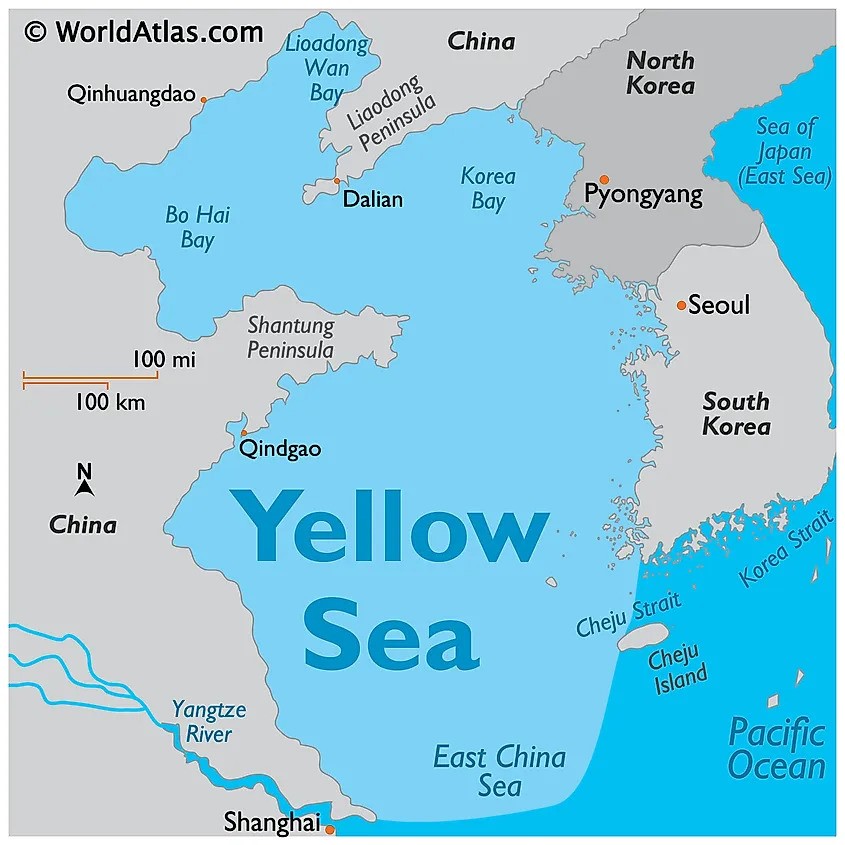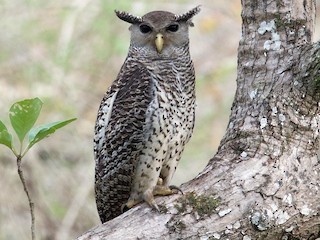JADES-GS-z14-0 & JADES Program
A new study has detected the 2 earliest and most distant galaxies.
- JADES-GS-z14-0 – It is estimated to have formed about 290 million years after the Big Bang, making it the earliest-known galaxy.
The Big Bang theory proposes that the universe began from an infinitely hot and dense single point, known as a singularity, around 13.7 billion years ago.
- Observed by – NASA's James Webb Space Telescope (JWST)
- Umbrella programme – JADES program (JWST Advanced Deep Extragalactic Survey).
- Location – It measures about 1,700-light years across.
A light year is the distance light travels in a year, which is 9.5 trillion km.
- Mass – It is equivalent to 500 million stars the size of our Sun and is rapidly forming new stars, about 20 every year.
- Size – It is significantly larger than other galaxies that the JADES team has measured at these distances.
- Luminous – It is brighter.
Galaxies tend to grow larger as the universe evolves, thus it would potentially get significantly brighter in the next many 100 million years.
- JADES-GS-z14-1 – It is smaller with a mass equal to about 100 million sun-sized stars, measures roughly 1,000 light years across and forms about 2 new stars per year.
JADES Program
- JADES – JWST Advanced Deep Extragalactic Survey.
- Partnership – An international collaboration of more than 80 astronomers from 10 countries.
- It is conducting an ambitious program of deep infrared imaging and multi-object spectroscopy.
- Technique – It uses 3 JWST instruments, in the 2 most famous deep fields on the sky
- The Hubble Deep Field (GOODS-N)
- The Hubble Ultra Deep Field (GOODS-S)
- 3 scientific instruments
- NIRCam – Near-Infrared Camera
- NIRSpec – Near-Infrared Spectrograph
- MIRI – Mid-Infrared Instrument
References
- The Indian Express| Discovery of Earliest Galaxies
- JADES Survey| JADES Program
North Korea’s Spy Satellite
Malligyong-1-1 satellite launch failed as the rocket exploded and fell into the Yellow Sea shortly after lift-off.
- It is a military reconnaissance satellite.
- Launched by – North Korea.
- Russia’s assistance – Russian experts have visited North Korea to help with the satellite and space rocket program.
Malligyong-1 satellite which was launched successfully in 2023 is North Korea’s 1st spy satellite.
- Reason for failure – One of the main issue is due to the failure of newly developed liquid-fuel rocket motor, which is the 1st stage.
- It uses a combination of liquid oxygen and petroleum engine.
- Challenges – Liquid oxygen engines require specialised storage and handling due to extremely low boiling points (-183 degree Celsius).
- It is quite difficult to solve combustion instability problems of this fuel system and apply materials and parts that can withstand extremely low temperatures.
North Korea’s Chollima-1 satellite uses hypergolic fuels, substances that can be stored at room temperature but ignite on contact each other, thus require careful handling. It is used in nuclear ballistic missiles.
Hypergolic fuels include hydrazine (N2H4) and its derivatives including: monomethylhydrazine (MMH), unsymmetrical dimethylhydrazine (UDMH), and Aerozine 50 (A-50).
- Significance – Using different engines might allow North Korea to differentiate its civilian space program from its missile program, which is banned by the UN Security Council.
|
Yellow Sea
|
- It is a large inlet of the western Pacific Ocean.
- Yellow colour – It was named so as the yellowish sand particles originating from the Gobi Desert that descend on the surface of the sea, thereby giving it a golden yellow colour.
- Also known as Huang Hai or Hwanghae.
- Location – It is lying between mainland China on the west and north, the Korean peninsula on the east and the Shandong Peninsula & Liaodong Peninsula to the south.
- Boundaries – It is to the north of the East China Sea while the Bo Hai Sea is the north-western extension of the Yellow Sea.
- It is dotted with numerous islands, some of which are
- Jeju Island (South Korea), Shandong Peninsula islands (China), and Ganghwa Island (South Korea).

|
References
- Business Insider| Malligyong-1-1 Satellite Launch Failed
- The Print| North Korea’s spy satellite
Spot-bellied Eagle Owl
Pench Tiger Reserve reports first photographic record of forest eagle owl.
- Scientific Name - Bubo Nipalensis.
- About - It is a large, bold, nocturnal species of owl known for their distinctive spots on their belly. It is also known as forest eagle owl.
- Habitat – It is found in dense evergreen and moist deciduous forest usually near water, mostly observed in Arjun and Banyan trees.
- Distribution
- In world – Bhutan, Cambodia, China, India, Laos, Myanmar, Nepal, Sri Lanka, Thailand, and Vietnam.
- In India – Foothills of Uttarakhand to North-eastern India, Gujarat, Western and Eastern Ghats.
These birds have also been reported from Madhya Pradesh and Kanha Tiger Reserve.
- Calls – Their call is a low, deep double hoot lasting 2 seconds. They make calls to communicate across long distances, territorial defence, and attracting mates.
- Prey - It is an apex predator, feeding on a variety of prey including large birds, rodents, small mammals, reptiles, and insects. It occasionally hunt on day.
- Conservation Status
- IUCN – Least concern
- CITES – Appendix II
- WPA – Schedule IV

Pench Tiger Reserve
- Pench Tiger Reserve is located in satpura hills of Madhya Pradesh.
- It is the 19th Tiger Reserve of the country, comprises of the Indira Priyadarshini Pench National Park, the Pench Mowgli Sanctuary.
- It derives its name from the River Pench which splitting the Park into two, while forming the boundary of Seoni and Chhindwara districts.
- The Meghdoot dam built across Pench River.
Reference
The Times of India | Forest eagle owl sighted in Pench Tiger Reserve
LignoSat wooden satellite
Recently scientists have developed the satellite named LignoSat.
- It is world’s 1st wooden satellite.
- Developed by – Japan, a collaboration between Kyoto University and the logging company Sumitomo Forestry.
- Aim – To test the idea of using wood as an eco-friendly alternative to metal based satellites as wood would burn completely upon re-entry into Earth's atmosphere.
- To measure the deformation of the wooden structure in space.
- Size – It is a cube that measures 10 centimetres on each side.
- Material – A timber from magnolia wood.
Magnolia wood is a highly sought-after timber, known for its striking colouration and fine grain.
- Significance – It was founded to be particularly stable and resistant to cracking in laboratory tests.
- There is no oxygen in space which could cause wood to burn, and no living creatures to cause it to rot.
- Future prospects – If the LignoSat succeeds in orbit, wood could become a material for future satellites.
- Over 2,000 spacecraft expected to launch annually.
|
Issues with Satellites made of Metals
|
- Creates space debris – All the metal based satellites which re-enter the Earth’s atmosphere burn and create tiny alumina particles, which will float in the upper atmosphere.
- Threat to satellites and spacecraft – Metals particles can damage the space observatory instruments.
- Depletes the ozone layer – Ozone layer protects us from harmful UV radiations from the Sun.
- Alters the amount of sunlight – It travels through the atmosphere and reaches the ground.
|
Currently, more than 27,000 tracked pieces of space debris orbit Earth at speeds of approximately 15,700 mph in low Earth orbit.
Reference
The Guardian| Development of Lignosat, the wooden satellite
Virus-like Particles (VLPs)
Scientists had recently developed a novel method to generate non-infectious virus-like particles (VLPs) that mimic the Nipah virus (NiV).
- Nipah Virus - Nipah virus (NiV) is a zoonotic disease that spreads primarily between animals and humans.
- Nipah is a highly pathogenic paramyxovirus, with a fatality rate of up to 80% in affected humans.
- The genome of the NiV encodes 6 major proteins:
- Glycoprotein (G)
- Fusion protein (F)
- Matrix (M)
- Nucleocapsid (N)
- Long polymerase (L)
- Phosphoprotein (P)
- Virus-like Particles (VLPs) – VLPs are molecules that closely resemble viruses, but are non-infectious because they contain no viral genetic material.
- Characteristics - VLPs carry most of the characteristics of the virus, except their ability to replicate (because it lacks the viral genome).
- The advent of NanoBiT technology and “HiBiT-tagged” VLP (HiBiT is an 11 amino acid peptide) makes it far more sophisticated.
- Scientists at the Institute of Advanced Virology (IAV) have generated “HiBiT-tagged” Nipah virus-like particles (NiV-VLPs).
- Highly sensitive and quantitative HiBiT-tagged Nipah virus-like particles is a platform for rapid antibody neutralisation studies.
- It was generated using plasmid-based expression systems, encoding the NiV structural proteins G, F, and M.
- The VLPs produced are morphologically and functionally identical to the native virus.
- The inclusion of a highly sensitive HiBiT tag on these VLPs accelerates their potential in antiviral drug screening and vaccine development.
- Virus neutralisation assays – These are critical for the development and evaluation of vaccines and immune-therapeutics,
- They are also used for conducting basic research into the immune response and pathogenesis of NiV.
- These tests, which traditionally require to be done in high security labs (BSL-4) with the infectious organism, can now be done safely in BSL-2 labs in the country using the NiV-VLPs.
- Biosafety level 4 (BSL-4) laboratories are designed to handle pathogens that are highly contagious and can cause fatal diseases.
- These pathogens are known as Risk Group 4 pathogens and include viruses like Ebola, Lassa, Nipah, Marburg and Crimean-Congo hemorrhagic fever.
References
The Hindu | New method to generate virus-like particles
